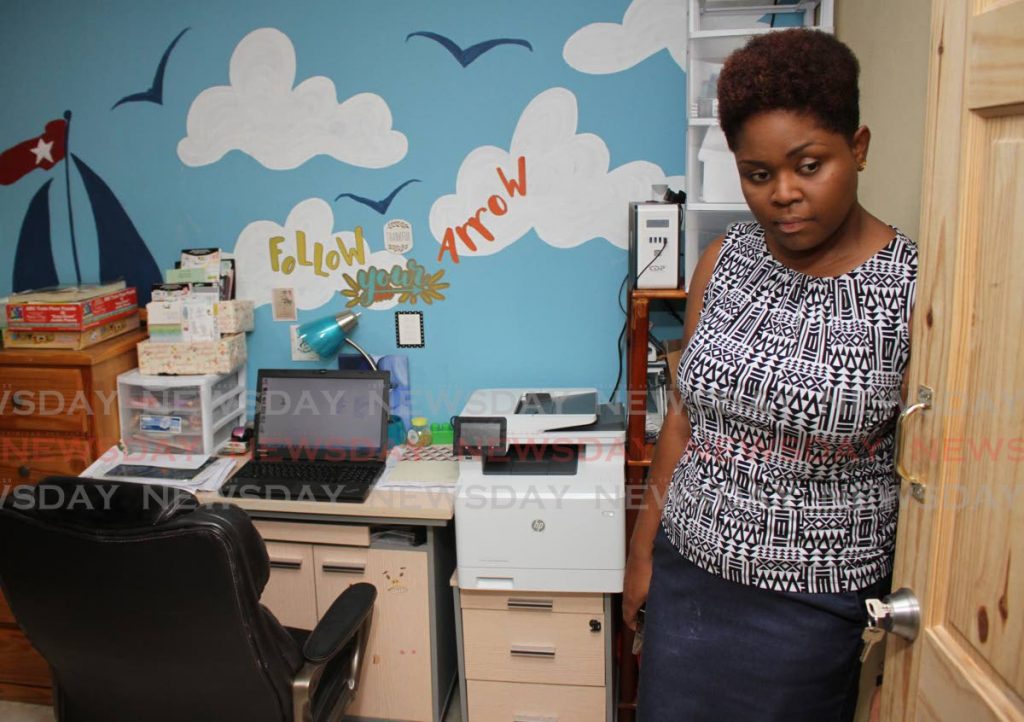TT’s networks can handle it

KERRY PETERS
Two weeks ago, La Toya Tracey, a social work consultant and family therapist, saw clients exclusively at her Woodbrook office. Now, to preserve vital patient-therapist relationships, she conducts hour-long sessions using the popular video chat app Skype.
For weekday work meetings, she relies on Zoom, the same video conferencing app the entire family uses to attend church service on Sundays.
And with schools closed, her three boys – aged two, three and ten – have been mostly cooped up at home glued to their devices for virtual lessons, online gaming and YouTube.
Between work and sheer entertainment – the boys are also hooked on the Netflix animated series StoryBots – the Traceys, like thousands of other families, have been spending significantly more time on the internet since the coronavirus outbreak.
But local service providers say their networks are ready for the increased strain, and the Telecommunications Authority (TATT) has added its support by allocating additional capacity, known in the telecoms industry as “spectrum.”
“We have approved the award of additional spectrum to both Digicel and TSTT, but this situation is totally unprecedented, so we cannot guarantee that what they have is sufficient,” said Cynthia Reddock-Downes, TATT’s acting CEO. “We would have to continue to monitor.”
Spectrum refers to the country’s radio frequencies, including radio waves, which are needed to transmit wirelessly across wifi and Bluetooth, and those required for everyday things like your remote-controlled gate. Reddock-Downes says just about any device which uses a radio transmitter requires access to one spectrum band or another, or what most people refer to as the airwaves.

Under the Telecommunications Act, TATT, as regulator, is mandated to manage the country’s spectrum by allocating to service providers across different frequencies or bands.
Each country has a finite amount of spectrum – the frequency range over which wireless transmission are safe and efficient for use. It has to be a sort of “Goldilocks zone” where the radio waves are, say, strong enough to pass through walls, but not so much so that they damage brain tissue.
Each country has a range of spectrum that is considered usable for wireless transmission. Some of it is held for specific use, like emergencies, and only the government will have access. Of the remaining capacity, a country makes money by licensing that spectrum to people who want to use it – usually internet service providers. Different types of wireless technology – 3G, 4G or 5G – have different spectrum requirements.
Spectrum is needed to serve bandwidth, the amount of data that can be delivered wirelessly from the telecoms provider.
In TT, there is more bandwidth than spectrum. Think of it like pushing a firehose through a keyhole – no matter how much water is coming through the firehose, it will be restricted by the size of the keyhole. By giving providers more spectrum, TATT is offering internet providers a bigger keyhole.
Digicel operations director Chandrika Samaroo confirmed in an interview on Tuesday that as a result of covid19 the company has expanded its core international and radio networks to accommodate the increased traffic and thanked TATT for its leadership on the matter.
Samaroo explained that the additional spectrum supplied by TATT would help Digicel mitigate potential network congestion during peak periods and customers should not experience degraded service.
Both TSTT and Flow gave similar assurances. TSTT chief executive Ronald Walcott said the company had implemented network and capacity upgrades to manage the increased load.
“We requested spectrum in the 1900 megahertz band, which would help boost our 4G LTE network, and spectrum in the 2.5 gigahertz band, which would boost capacity in our 4G TDD LTE fixed network. The latter would allow for greater throughput capacity for customers at home,” said Walcott.
Walcott also said TSTT had moved quickly to ensure uninterrupted service and increased reserve power in locations with key healthcare facilities, such as Caura, Couva and Balandra.
Meanwhile, Flow’s country manager Kurleigh Prescod confirmed a 25 per cent uptick across its broadband infrastructure since covid19 but added that the company had completed a number of upgrades to handle the spike in network traffic.
That spike was even more pronounced at Digicel and TSTT, both companies reporting a roughly 30-40 per cent increased load over the past three weeks.
And those figures could get even higher should the government decide to keep more people at home. If thousands of public servants or private-sector employees must work from home, for instance, concerns over network bottlenecks could be amplified despite early assurances. And the longer school remains closed, the more demand on broadband networks.
Still, the country’s three major providers have struck an optimistic note saying there is nothing to worry about. Their focus, for now, is managing the increased traffic and ensuring network reliability.
Said Walcott: “When there is such an exponential increase in traffic, the focus is less on speed and more on reliability, capacity, coverage and service assurance.”
Contingency and business continuity plans aside, covid19 has led to some unexpected benefits for consumers, not least free package upgrades.
TSTT has launched a number of commercial initiatives to benefit customers, including zero-rated websites, data upgrades and increased time limits at public wifi zones.
Digicel said it is giving its mobile customers one gigabyte of LTE data for free and zero-rating all of the critical websites related to covid19, including the World Health Organization and the and Pan American Health Organisation, as well as the official domains for the ministries of Health and Communications and the Office of Disaster Preparedness and Management. Local media websites accessed through a Digicel connection are also exempt from data charges.
Flow confirmed it recently gave free speed upgrades to some 90 per cent of its residential broadband customers.
Another key customer benefit has been the waiving of data caps, a more-or-less artificial restriction on customers’ data usage which mobile providers typically use to boost profits. Digicel spokesman Colin Greaves told Business Day the company had removed the LTE data caps on all unlimited prepaid plans.
But in light of the looming public health crisis created by covid19, the issue of data caps has generated significant criticism around the world and international telecom experts say it’s time to get rid of them altogether.
Reddock-Downes said the issue of data caps is something TATT considers in its role as regulator, but even as she praised local internet service providers for lifting data caps during the covid19 lockdown, she explained that eliminating them completely may not be possible, given the volume of people using the local networks.
“That’s why we have given that additional spectrum to both Digicel and TSTT for free,” Reddock-Downes said. “The idea is to make more services available to their existing customers at no additional charge.”

Comments
"TT’s networks can handle it"